Antica Spezieria S. Giovanni(Antique Spice Apothecary) |
 |
|
|
Of very ancient origins, the Antique Spice Apothecary of St. John’s Church , can in fact be found in documentation from as early as 1201. Located at Borgo Pipa n° 1, it represents a rare example of a 16-17th century pharmacy. Founded and run by the Benedictines until 1766, it was then bought by the State. |
Biblioteca Palatina(Palatina Library) |
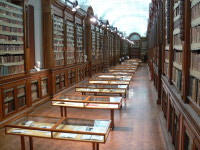 |
|
| The Royal Parmense Library, National Library, Imperial Bibliothèque, Bibliothèque de la Ville de Parme, and the Ducal Library are today united into the Biblioteca Palatina , which is located on the second floor of the Pilotta Palace. Founded on the request of Ferdinando di Borbone, and by the Reform Minister Guillaume-Lèon Du Tillot, its original project was given over to the librarian Paolo Maria Paciaudi, a religious Theatine of Piemontese origin. It gained publishing rights from 1768 and, the first in Italy, adopted the author card catalogue system. It was installed with wooden shelving designed by E. A. Petitot, provided with valuable bibliographic material, subdivided by subject into six main categories (theology, nomenclature, philosophy, history, philology, liberal arts), was officially inaugurated in May of 1769. Besides Paciaudi, the librarians who had a great influence on the library were the following: Ireneo Affò (1785-1797); Angelo Pezzana (1804-1862); Federico Odorici (1862-1876); Edoardo Alvisi (1893-1915); Pietro Zorzanello (1927-1935); Giovanni Masi (1935-1952) and Angelo Ciavarella (1957-1973). Today Leonardo Farinelli directs it. If the library’s layout is due to the efforts of Paciaudi, the purchase of collections of exceptional cultural, bibliographic, and artistic value is above all the work of Angelo Pezzana who was the director when the "Maria Luigia" Reading Room was built. Under the Italian Unity it became part of the State, and Museum Bodonian and the Musical Section (this latter one in the “A. Boito Conservatory Hall) were annexed on. |
Casa natale di Arturo Toscanini(Toscanini's House Museum) |
 |
|
|
The birthplace of Arturo Toscanini is found in Borgo Tanzi n. 13 and houses a collection of heirlooms, personal objects and photographs of the great orchestral director. The house was purchased by his children and donated to the city. All of the exhibited material comes from his Milanese home of via Durini and his American mansion in Riversale. Arturo Toscanini. He was born in Parma in 1867 and began his career as a cellist. He triumphed as orchestra director in Rio de Janeiro in 1889 and only 9 years later he became director at the Scala Theatre in Milan. He stayed in Italy until 1903 when he transferred to the Metropolitan in New York remaining there until World War I. |
Fondazione Magnani Rocca |
 |
|
| The museum headquarters of the Fondazione Magnani Rocca , inaugurated in the Spring of 1990 in the Court Villa of Mamiamo in Traversetolo, near Parma, hosts the valuable collection of Luigi Magnani (1906 - 1984), a collection that enumerates, among others, works of Gentile da Fabriano , Filippo Lippi , Dürer , Tiziano , Rubens , Van Dyck , Goya and, among contemporary artists, Monet , Renoir , Cézanne up until de Pisis , 50 works of Morandi , Burri , and even sculpture including an important one by Canova and two works of Lorenzo Bartolini . In the Villa, whose original furniture arrangement was left as intact as possible in order to keep the same atmosphere as it once was when inhabited, there are important Imperial furniture and objects such as a malachite bathtub from Thomire , and furniture by Jacob . As for the technical systems and exhibition structures, the most advanced international techniques were used, both to guarantee a perfect preservation of the artwork, as well as giving it particular features that make it suitable for exhibiting works on loan from other museums. The main headquarters have been transformed into a multipurpose room for temporary exhibitions, conferences, and conventions. |
Galleria Nazionale(National Gallery) |
 |
|
| The core of the collection in the National Gallery of Parma goes back to the collection of the first Bourbons in Parma who desired the idea of creating a ducal collection after Carlo di Borbone brought the sumptuous Farnesian Painting collection to Naples in 1734.
In addition to the first group of paintings purchased especially in Tuscany, there were several pieces sent back from France after the Napoleonic lootings and those purchases that Maria Luigia had made from the Dalla Rosa Prati, Sanvitale, Callani and Boiardi collections. In 1939, Armando Ottaviano Quintavalle reorganized and cleared out the collection during the war, saving it from bombings that struck instead the Farnese Theatre. Its exhibition space was completely renovated and re-modernized at the beginning of the 1980s utilizing bridges and passages supported by tension-structures and white tubes. The collection covers the chronological arc: from the Medieval (Romanesque capitals and slabs, including the one that was found next to the Deposition by Antelami in the Parma Cathedral), 14th century examples (Daddi, Bicci di Lorenzo, Gaddi), and then paintings by Beato Angelico , Correggio (Virgin of St. Girolamo, Martyr of four saints, Virgin of the Stairway, the detached fresco with the Incoronation of the Virgin), Parmigianino (Turkish slave), Leonardo (Head of Leda), Araldi, Loschi, Caselli, Cima da Conegliano, Sebastiano del Piombo, Giulio Romano, Dosso Dossi, Garofalo, Anselmi, Bertoja, Sons, Tinti, Schedoni, Spada, Lanfranco, Bernabei, Holbein (Erasmo da Rotterdam), Carracci, Guercino, El Greco, Van Dyck, Bronzino, Tintoretto, Canaletto, Ricci, Piazzetta, Pittoni, Bellotto, Tiepolo . A section of 19th century busts represent members of the court under Maria Luigia. A large room is dedicated to court portraits of the 18th century with the celebrated portrait of Philip of the Ducal family painted by Giuseppe Baldrighi. At the centre of the room a recent purchase towers over all else: the splendid table decoration created by Damià Campeny. The collection of 19th century local paintings is also very large and a room is dedicated to 19th century pieces. |
Museo Amedeo Bocchi |
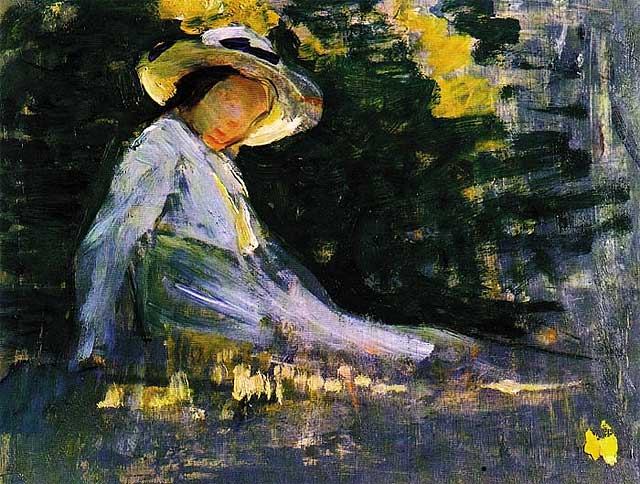 |
|
| There are 133 works that the inheritors of Amedeo Bocchi , his sister-in-law Rina Cabassi and niece Emilia Bocchi , have donated to the Monte di Parma Foundation for the ancient rooms of the museum in the Sanvitale Palace dedicated in his name, as he would have certainly desired. The donation comprises works executed during the painter’s entire creative period with every base and genre, including sculptures. Among the subjects, the most dear to Bocchi return frequently: his daughter Bianca (dead at just thirty-four years old), his family, landscape, the human figure, and religious themes. The exposition consists of four rooms : the portraits of his daughter, the studies for the decoration of the Council Room in the main office of the Parma Savings Bank (Cassa di Risparmio di Parma), preparatory drawings for paintings and frescoes planned for Rome, and some objects from the artist’s studio and two large paintings from his late period: The Baptism, 1938-40, which is property of the Monte di Parma Foundation, and The Rest, 1967, property of the Banca Monte of Parma. |
Museo Archeologico Nazionale(National Archaeological Museum) |
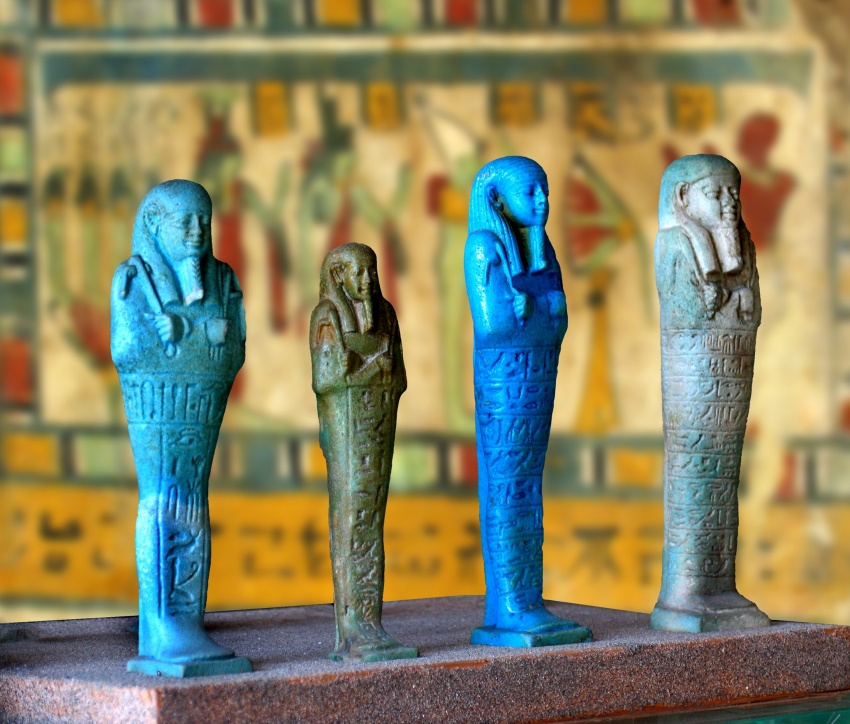 |
|
| The museum was founded by don Filippo di Borbone in 1760 to preserve the finds which had been unearthed in the Roman town of Veleia – a Roman municipality found in the hills in the province of Piacenza. Excavations had begun under the direction of Filippo’s brother, Carlo, who had promoted excavation works in Pompei and Herculaneum, following the finding of the "tabula Alimentaria", on display in the museum. Thus the museum originated as a place where archaeological finds from the province of Parma would be kept, and as time passed objects from the Farnese and Gonzaga collections were added to those on display. Its present layout was decided by Marie Louise of Austria and in the 19th century one of the most important collections of pre-historic finds in northern Italy was added to the museum’s collections. |
Museo Bodoniano |
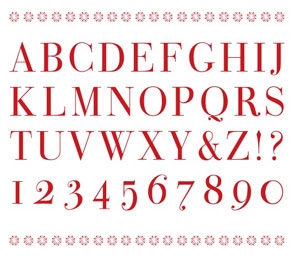 |
|
|
Dedicated to the work of Giambattista Bodoni , it has gathered over 80,000 original pieces coming from the Parma Royal Printing shop that Bodoni directed from 1768 . Giambattista Bodoni |
Museo d'Arte Cinese(Chinese Art Museum) |
 |
|
|
We’re talking about China . We’re talking about Ch'ien Lung who was the leader in the 18th century for a long reign (1736-1795). We see him, pot-bellied and serene, in a portrait of dignified and intense tones of porcelain, in a hunting outfit next to a pine tree, a bamboo and a plum tree, which are symbols of the three great religions. This is not the only hint of him in the Museo d'Arte Cinese that is found today in the newest wing of the Saveriano Institute for Foreign Missions. There was already an existing room for this purpose from as early as 1900. Monsignor Conforti, founder of the institute desired it in order to collect all of the objects the missionaries sent back from that distant world. A couple of them stayed in China for more than fifty years starting in 1899 and had collected in fact the largest amount of works- some truly valuable – of the museum, which was enriched subsequently by other purchases and donations. The objects are divided into four categories: bronze, ceramic, paintings and minor arts (wood, stone, jade, etc). On the entrance door there are eight characters written vertically, destined for the entrance of an ancient palace, reminding in its elegant and golden calligraphy, that a wise man speaks wise words. |
Museo Diocesano |
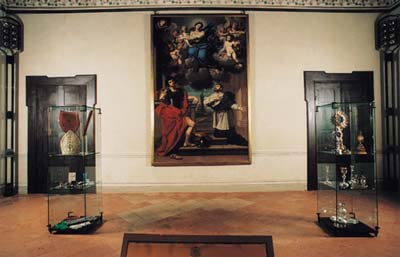 |
|
| On entering the main entrance to the Bishop’s Palace, on the side of Vicolo del Vescovado you have access to a walkway that runs beneath the lane, at the end of which the visitor will find himself in the first room of the new Diocesan Museum, housed in the basement of the bishopric, which extends along the entire wing of the façade. Renovation works have been paid for by the Cariparma Foundation and by the Diocese, by the 8 per thousand set aside through tax returns, and by Funds for the Jubilee Celebrations. Consolidation works on the rooms housing the Museum were executed mainly to stabilize the structures affected by the 1971 earthquake. Works on the basement area were started during the 2000 Jubilee Year and completed in the year 2002. The medieval artefacts on display in the Museum include several ceramic items dating back to the early Middle Ages and found during excavation works in the courtyard of the Bishopric; paving stones for the presbytery of the Cathedral; a slab with St. Martin and a pilgrim (iconography which was less common than the one with St. Martin and a poor man); and the six important statues by Antelami (Solomon and the Queen of Sheba, David and a prophet, the archangels Michael and Raphael) which until recently were found in the external niches in the northern side of the Baptistery and have now been replaced by plaster casts to preserve the original works following the careful restoration carried out a few years ago. Explanatory panels provide visitors with information about the items on display; in fact, the Museum does not only house figurative works, documents and sacred jewellery, but also provides a vivid illustration of the city’s historical centre as it once was, with the anthropic and architectural strata which were subsequently added from the Roman age to the age when the Bishop’s Palace was built: 1045-55 the first nucleus, 1172 the turreted fortification, 1232-34 building of the façade. Thus, visitors can see an urban archaeological find which was identified during excavation works on the foundations of the building, i.e. a section of the Roman walls dating back to the end of the III century A.D., which had been thought until then to have been built where via Angelo Mazza now stands and was instead found in this wing of the Palace; this provided fresh insight into the documentary reconstruction of how the neighbourhood developed around the Bishopric at least until the IX century. Various items which were found in the province of Parma and which refer to this delicate period of the birth of Christianity will be on display: an early-Christian oil-lamp bearing Christ’s monogram found near Carignano; a sarcophagus with bas-reliefs illustrating the Seasons; several coins and stucco-work from a Roman domus which lay beneath the Cathedral and appeared during works for the installation of a heating system in 1982; the two mosaics found in 1955 in the Cathedral square, one of which was originally in the early-Christian cathedral; an epigraph dating back to the III century which testifies to the cultural syncretism which formed the backdrop for the birth of Christianity in Parma. In 1960 the Cassa di Risparmio savings bank undertook to finance restoration works on the courtyard of the Bishopric; these works revealed the two-tiered loggias built at the beginning of the XVI century. Once the restoration works financed by the bank were completed, the five rooms found on the first floor of the palace were set aside for their original use, for representation and meetings, to be opened to the public occasionally and to house temporary exhibitions. The paintings in these rooms were restored courtesy of the Cariparma Foundation; they include the portraits of Bishops of Parma, a marvellous Belgian tapestry illustrating the Ascension of Christ (1530-40) which used to belong to the Farnese family (the Palace has once been home to the dukes Ottavio and Alessandro), as well as a large number of paintings coming from the city’s churches. One room is set aside for the Collegio Teologico Parmense, the theological college in Parma which was re-instated by Ranuccio I Farnese in 1603. Restoration works on the second floor recovered five rooms which had been used as granaries since the XVIII century and currently house the Diocesan Office for Cultural Heritage. In one of the corner rooms, which had perhaps once been used as a private chapel by the Bishop Grazia (1224-36), a Deesis was recently found, as well as fragments from frescoes whose style is reminiscent of those of the cupola in the Baptistery. |
Museo dei burattini The puppet castle |
 |
|
| The collection of Giordano Ferrari can be considered one of the most important Italian collections regarding theatre animation. On the interior of about three hundred square metres, the museum has a considerable exhibition space set aside for material that this puppet master from Parma has patiently gathered in more than sixty-years of activity. Not only is the collection made up of the production and carving of the Ferrari family, but above all of pieces from diverse origins, various collections, purchases or gifts from other artists. The approximate 500 pieces on exhibition (puppets, marionettes, heads, stage objects, photographs and posters) are only one part of the much larger collection that includes the wooden actors, the scenic art, story texts, volumes on the theatre and a paper archive that gives important evidence of the theatre world. The animations ( Capitan Fracassa and Conference-animation), for which booking is advised, are included in the price of a normal entrance ticket. The guided visits can be requested for any time during the entire day, but likewise must be booked ahead of time. |
Museo Glauco Lombardi |
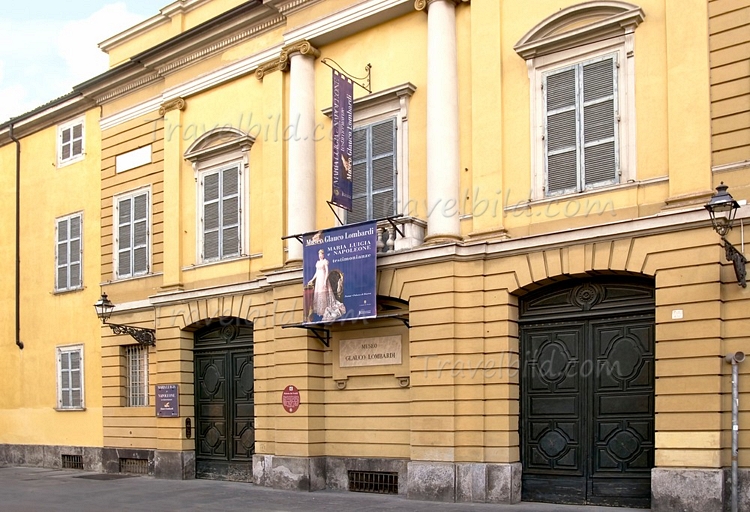 |
|
|
The Museum, founded in 1915 upon the initiative of the collector from Colorno, Glauco Lombardi (1881-1970), has been subsequently enriched from its first location in Colorno’s Ducal Palace to its current site in Parma at the historic Reserve Palace, which already houses the glorious Ducal Theatre. The collection, reorganized in a new exhibiting structure in 2000 in collaboration with the Monte di Parma Foundation, houses many heirlooms of Maria Luigia , Duchess of Parma from 1815 to 1847, and of her husband Napoleon Bonaparte (the luminous Hall of Feasts displays Maria Luigia’s ceremonial gown and portraits of Napoleon and the Duke of Reichstadt), as well as several paintings and artistic objects of Parma of the late 18th and early 19th centuries, among which also the print series Masquerade à la gréque of Petitot , to which an entire room is dedicated. A room projected by Petitot and by Benigno Bossi (Golden Room) displays a collection of drawings of Giuseppe Naudin , a portrait of Canova painted by Thomas Lawrence and the sketch for the curtain of the Regio Theatre by G.B.Borghesi . A room that was perhaps the study of Duke Charles III preserves a series of watercolours by Italian, French and German Painters from the first half of the 19th century. |
Nuova Pinacoteca Stuard |
 |
|
|
The Stuard collection, comprising more than three-hundred works , represents the successful outcome of a brilliant and generous intuition of a private citizen, Giuseppe Stuard (Parma, 1790-1834), who was the administrator of the St. Philip Neri Congregation. For over a century the Congregation Palace located on Cavestro Street hosted the collection until being transferred in May 2002 to the ex-convent of St. Paul, which is only a few metres from St. Paul’s chambers and the Puppet Museum. The exhibition path, from the 14th and 15th centuries until the 1900s, went through twenty-two different spaces arranged on two floors that included works from various artistic cultures. The small, centralised cloister serves as a type of screen and backdrop to the exhibition path. The route follows various paintings, portraits, heirlooms, tapestries, and different documented testimonies of the artistic history of Parma as well as the same Stuard family. The first gallery room opens onto St. Paul’s Votive Chapel , an ex-defensive tower, then bell tower with a splendid single-lancet window and hemispheric dome. |
Ospedale VecchioThe Old Hospital(opposite B&B Rubra) |
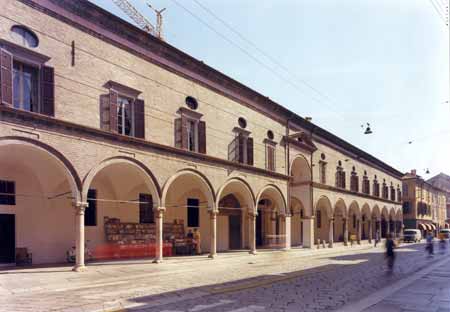 |
|
| This was the city’s hospital from the 15th century to 1929; an impressive building in the ‘Oltretorrente’ area of the city in Strada D'Azeglio and Borgo Cocconi, it represents one of the oldest examples of a hospice. It was founded in 1201 by Rodolfo Tanzi, a knight in the Teutonic order – the order combined military aims with charitable services and taking care of the ill – to provide treatment for the ill; it soon became too small for the number of people being hospitalized, and Rodolfo’s successor had a new structure built, the one in Strada D’Azeglio, as a refuge for foundlings, which became known as ‘degli Esposti’. A document dated 1292 mentions a portico and a cloister in the building. The building which can be visited today was rebuilt in the 15th century. This new building needed to contain all the smaller hospitals in the area and become the single ‘Main’ hospital; it was designed by the Milanese architect, Giovanni Antonio da Erba. His model was the old Hospital in Milan - the 'Ca Granda – designed by Filarete and currently the seat of the State University in Milan. Today the building in Parma houses the State Archives and Municipal Video library, the Bizzozero library which specializes in agricultural texts, and the Historical Archives for Parma. |
